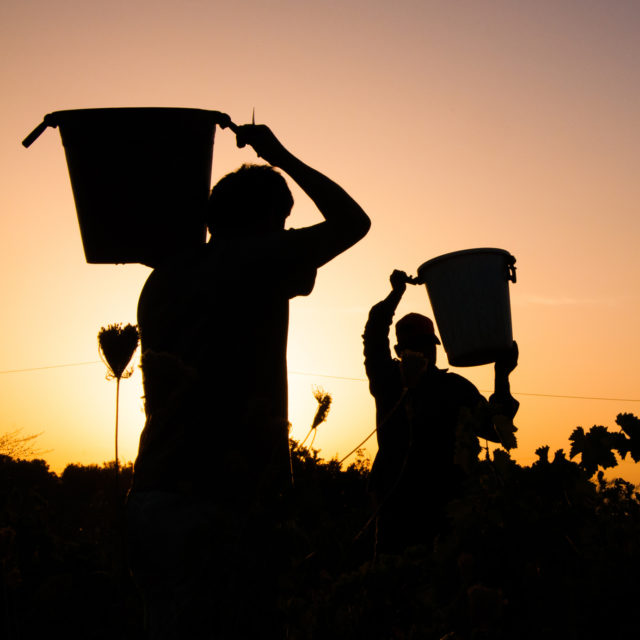Wine has a reputation for luxury in the United States, but ultimately, it’s an agricultural product, just like corn or wheat or 19-cent supermarket bananas. And we recently saw how little the Office of the U.S. Trade Representative values that commodity when it announced 25 percent tariffs on wine imports from France, Spain, Germany, and the United Kingdom, effective Oct. 18.
But the tariffs aren’t really about wine, of course. They’re the latest double-dog-dare in an ongoing dispute over aircraft subsidies, as detailed in a recent New York Times article, “Why Trump Just Made Your Dinner More Expensive.”
No one is happy to hear grand cru Burgundy is about to get even more expensive, but, in this case, the price hike is just the tip of the French-cut iceberg. By isolating current and future American winemakers from the most powerful wine markets in the world, the U.S. is endangering the industry’s creative, technical, and economic futures in ways that are both abstract and very, very real.
“Of course we are all shocked at how incredibly shortsighted and nonsensical this move by the Trump Administration is,” Christopher Nickolopoulos, CEO of San Francisco’s Maritime Wine Trading Collective, says. “The net result to the end consumer is severe. Expect retail prices on French table wines below 14 percent alcohol to increase by 40 to 50 percent.
“This new ‘policy’ is punitive toward U.S. wine importers, retailers, restaurants, and our employees,” Nickolopoulos adds.
The immediate implications are vast. The tariffs are a potential death knell for California farmers already fearing a recession, and will likely shutter small American businesses like wine shops and restaurants. Everyone from boutique importers to waiters to dock workers at the port of Newark, N.J., will feel the pinch in upcoming paystubs.
“Thirty-nine percent of all imported wines (by value) go through Newark,” Karl Storchmann, editor, Journal of Wine Economics, writes VinePair in an email. “Most of the wines are from Europe.”
For those shipping bottles, the tariffs do more than just upend a status quo. Andrés Harmsen Corcuera, managing director of importer Aviva Vino, says Spanish winemakers have worked for years to make their wine marketable overseas. He fears they will lose momentum and recognition in the coming months and years, as American consumers turn away from heavily taxed Spanish bottles toward more affordable options.
“It is a pity that Spanish wine, which is a product rich in culture and history that brings so much happiness and joy to so many people’s dinner tables in the U.S., is being caught up in a trade war which has nothing to do with either the end consumer or the people involved in the wine industry,” Harmsen Corcuera says.
The American wine industry would be wise to share his worry. Trade is, by definition, a two-way street, and the E.U. is the United States’s largest export market. In 2018, American wine sales to the E.U. totaled $469 million, according to the Wine Institute, a California winegrowers advocacy group.
“We are concerned that this action will lead to increased tariffs on U.S. wines and set back our efforts to continue growing U.S. wine exports.” Bobby Koch, Wine Institute president and CEO, said in a statement on Oct. 2.
If France were to respond to our new tariff with retaliatory taxes on U.S. wine exports, for example, it could be devastating for an industry already beset by overproduction. “Throughout California, the wine industry is faced with a global supply problem, and some farmers say it could drive them out of business,” Esther Mobley wrote in the San Francisco Chronicle on Oct. 4.
Narrowing the global shelves also stunts momentum for American wine producers. While the 1976 Judgment of Paris may have forced international audiences to pay more attention to the American wine industry, it’s hardly known as the gold standard worldwide. After all, the first American commercial wine industry opened in 1798, whereas Europe’s oldest wineries date to the 1100s.
Many American winemakers were heavily influenced by their European peers at those centuries-old chateaux. To put global winemakers further at odds with each other doesn’t just inhibit how American vintners learn, share, and improve; it also prevents consumers from learning, exploring, and developing their palates as well. There’s a difference between drinking local and making the world feel smaller, versus making it smaller-minded.
These tariffs are like water damage in an old house. What you see is bad, but what lies beneath is much, much worse. It could take years to fix, or the damage might be permanent. Maybe you can learn to live with it. But who would want to?
